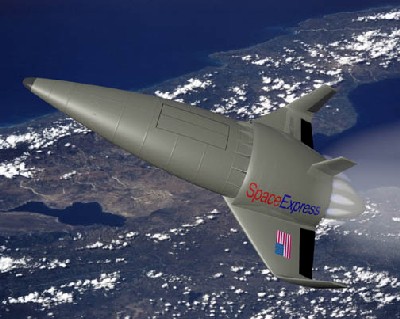How Air-breathing Rockets Will Work

While most of NASA’s projects look toward the future for inspiration, one of the space agency’s projects is looking at a more conventional engine technology to make space travel cheaper. In an effort to lighten the load of spacecraft at launch, NASA engineers have designed a new rocket engine that eliminates the need for onboard oxidizer. Instead, this new air-breathing rocket engine will extract oxygen from the air to burn fuel as it speeds to orbit.
Rocket Image Gallery
The idea of an engine that draws in air to provide thrust isn’t new. Jet engines have been using this process for decades. Using air from the atmosphere for supersonic jet engines to power a lightweight spacecraft will ultimately lessen the cost of putting the spacecraft into orbit. Currently, it costs about $10,000 per pound ($22,000/kg) to put an object in orbit. At those prices, it would cost $1,500,000 to send a 150-pound person into space. NASA’s goal is to reduce launch cost to only a few hundred dollars per pound within the next 25 years. They believe one way to do that is to dump the more than a million pounds of liquid oxidizer that is currently needed for combustion.
“Air-breathing rocket engine technologies have the potential of opening the space frontier to ordinary folks,” said Uwe Hueter of NASA’s Marshall Space Flight Center in Huntsville, Ala. In this edition of How Stuff WILL Work, you’ll find out how you may fly into space on one of these air-breathing rockets, how the engines work and how air-breathing rockets will be launched into space.
In a conventional rocket engine, a liquid oxidizer and a fuel are pumped into a combustion chamber where they burn to create a high-pressure and high-velocity stream of hot gases. These gases flow through a nozzle that accelerates them further (5,000 to 10,000 mph exit velocities being typical), and then leave the engine. This process provides thrust for the spacecraft.
If you’ve read the article on How Rocket Engines Work, then you know that the space shuttle needs 143,000 gallons of liquid oxygen, which weighs about 1,359,000 pounds. When empty, the shuttle itself only weighs 165,000 pounds, the external tank weighs 78,100 pounds, and the two solid rocket boosters weigh 185,000 pounds each. That’s a total of 613,000 pounds. When you add fuel and oxidizer, the total weight of the vehicle jumps to 4.4 million pounds.
NASA has determined that it can easily drop the weight of a vehicle at launch if they were to take away the liquid oxidizer, which would quickly drop the weight of the vehicle to about 3.1 million pounds. That’s still a heavy vehicle, but it would mean a huge reduction in cost of launching a vehicle into orbit.
So, if you remove the liquid oxygen, wouldn’t the fuel be unable to combust and provide thrust? You have to think outside the normal operation of a conventional rocket engine. Instead of using liquid oxidizer, an air-breathing rocket, as its name suggests, will take in air from the atmosphere. It will then combine it with the fuel to create combustion and provide thrust.
An air-breathing rocket engine, also called a rocket-based, combined cycle engine, is very similar to a jet engine. In a jet engine, air is sucked in by the compressor. The engine then compresses the air, combines it with a fuel, and burns the product, which expands and provides thrust. A jet engine can only be used for up to Mach 3 or 4 before its parts will begin to overheat. In a supersonic combustion ramjet, or scramjet, an air inlet draws in air. The air is slowed and compressed as the vehicle speeds through the atmosphere. Fuel is added to the supersonic airflow, where the two mix and burn. Fuels most likely to be used with the air-breathing rockets include liquid hydrogen or hydrocarbon fuel.



 Creators of mankind
Creators of mankind Description of “Tall white aliens”
Description of “Tall white aliens” Where they came from?
Where they came from? About hostile civilizations
About hostile civilizations The war for the Earth
The war for the Earth “Tall white aliens” about eternal life
“Tall white aliens” about eternal life Video: “Nordic aliens”
Video: “Nordic aliens” Aliens
Aliens Alien encounters
Alien encounters The aliens base
The aliens base UFO
UFO Technology UFO
Technology UFO Underground civilization
Underground civilization Ancient alien artifacts
Ancient alien artifacts Military and UFO
Military and UFO Mysteries and hypotheses
Mysteries and hypotheses Scientific facts
Scientific facts


















